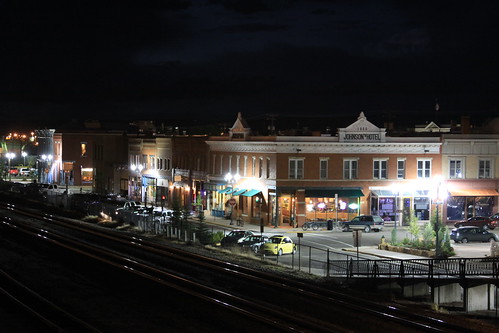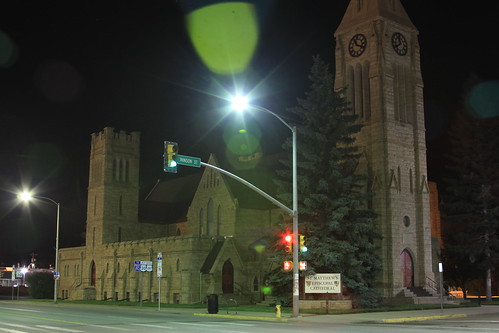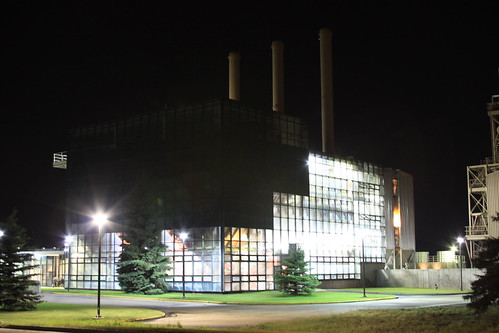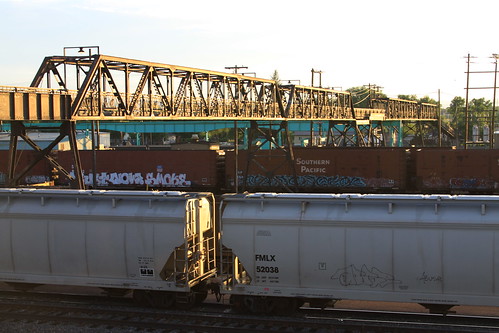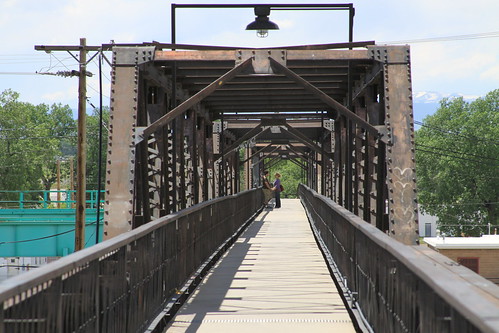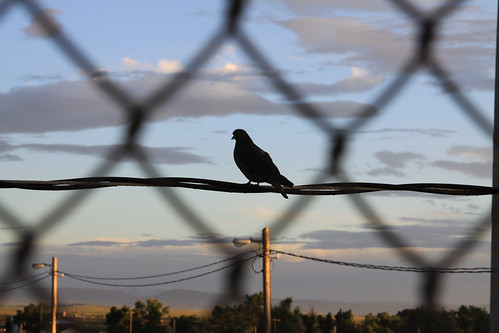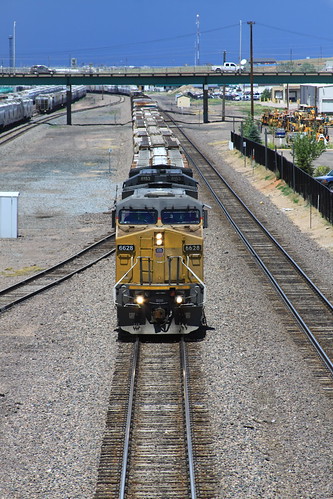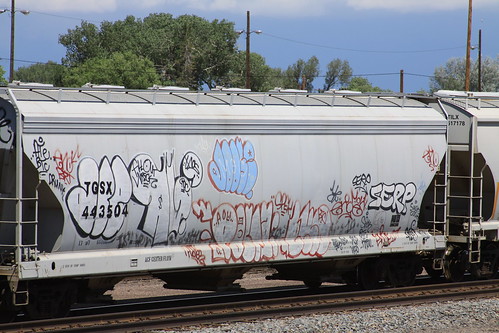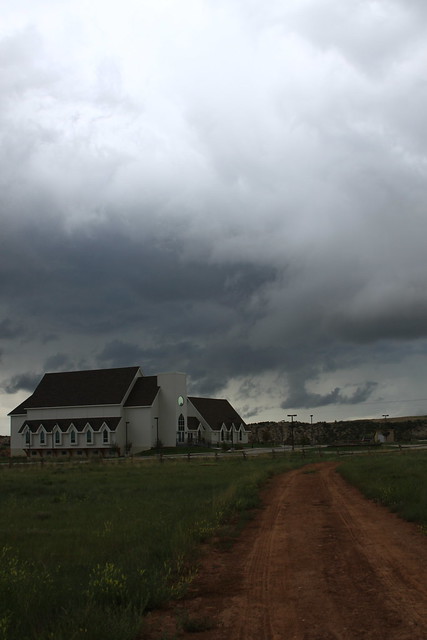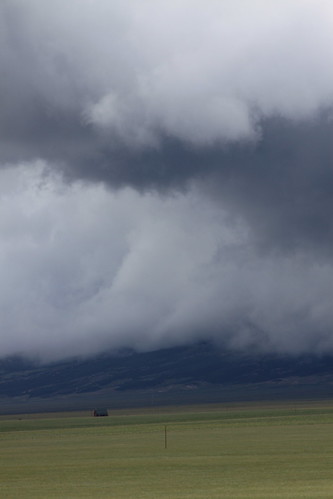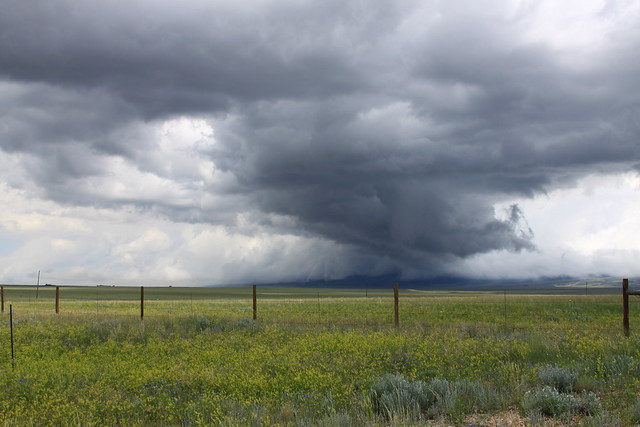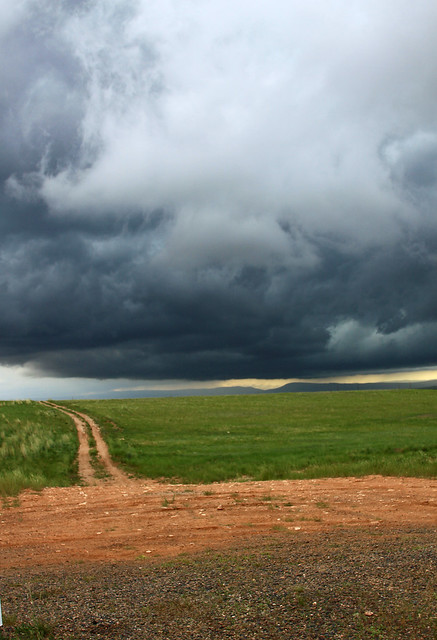I have been known, in my spare time, to write a little poetry-- whether or not it's good poetry I'll leave up to the experts, but I do write poetry nonetheless.
If you're interested in seeing what I can do with two idle hands and a wandering imagination, I have a poem right now posted on Real Bloggers United: The Blog. It's a fun little piece about-- you guessed it-- Laramie. Sort of. It's more about a picture I saw once in a UW yearbook.
Actually, this month's postings, thus far, promise to be quite interesting. Glen of Glen's Life has a great post up about camping misadventures, and with a "blogger's choice" topic for the month, the postings should be quite entertaining. Check it out!
Calling all Theater companies and performers!
Open Call to Theater companies, performers, researchers:
I would like to hear other voices besides my own on this blog. If you'd like to write about your TLP experiences here, e-mail them to me and I'll put them up.
Topics can include dramaturgy to staging to personal responses to the play. Anything goes!
I would like to hear other voices besides my own on this blog. If you'd like to write about your TLP experiences here, e-mail them to me and I'll put them up.
Topics can include dramaturgy to staging to personal responses to the play. Anything goes!
Saturday, September 11, 2010
Shameless plug for RBU...
Labels:
creative writing,
RBU,
University of Wyoming
Friday, September 10, 2010
Laramie in Pictures: By Night
Most of my memories of Laramie are by night. Evenings were the only time I had to get off campus most days, so the landscape I most commonly knew as an undergraduate was one lit by the streetlight rather than the sun. The town has a completely different character under the moonlight, and one that, I have to admit, I rather fancy. So, on July 3rd this year, I was wandering around downtown Laramie, Wyoming with a camera and a tripod taking night pictures of the city.
I know these streets look completely deserted for a Saturday night, but you have to understand Laramie culture (and its climate) to realize how busy things actually were. I was walking around town in a thick hoodie and a coat, and I was still shivering because it dropped down into the fifties that night; if you're smart, you were indoors. Late at night, the streets are deserted because all of the bars are packed; the next morning when I took pictures, the streets were deserted because all the churches were full. It's an interesting little social comment on Laramie culture. Enjoy!
I know these streets look completely deserted for a Saturday night, but you have to understand Laramie culture (and its climate) to realize how busy things actually were. I was walking around town in a thick hoodie and a coat, and I was still shivering because it dropped down into the fifties that night; if you're smart, you were indoors. Late at night, the streets are deserted because all of the bars are packed; the next morning when I took pictures, the streets were deserted because all the churches were full. It's an interesting little social comment on Laramie culture. Enjoy!
Labels:
In Pictures,
landscape,
Laramie
Tuesday, September 7, 2010
Coyote's Tour of West Laramie
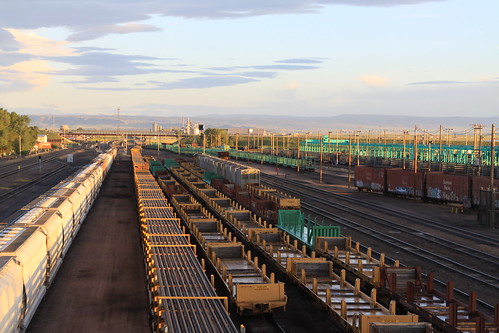
One evening while I was in Laramie, I meet Coyote for dinner, and he walks me over the catwalk towards his home. He wants to show me West Laramie's green belt project, a paved walkway following the river on the south end. He wanted me to see how pretty it all is in the sunset, he said, and maybe we can get some pictures with my camera. (It was beautiful, too. It's a shame the light didn't hold.) Maybe we'd see some badgers down by the southern loop, he adds. They live near the prairie dog town where the pickings are easy. Sometimes he comes down there to just sit and watch, to see if he can catch a glimpse of their stripey heads poking out of their dens.
As we stroll down South Pine and pass through other streets on the way to the green belt, he points out the houses of people he knows who live there: police officers, professors, health professionals. We turn a corner and pass by one small, well-kept house with picket signs for both candidates in the current election for sheriff, which makes no sense until we see the current Sheriff's cruiser parked in the driveway. We both laugh; local politics can be funny that way. He also points out a beautiful old church just beyond the tracks in the other direction, with a white steeple glowing in the dusky light. He tells me it's the second-oldest church in Laramie-- "and it's in West Laramie," he adds with a touch of pride.
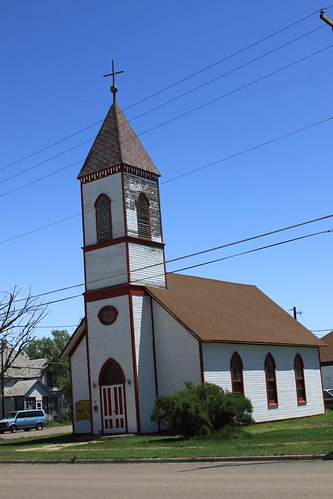 And it occurs to me, as I listen to Coyote talk animatedly about his neighborhood, that if I ignore the university, West Laramie doesn't look any different to me than the rest of the town. In the sunset I see the same wide paved streets on East Garfield as West Garfield, arched by the same massive, shaggy cottonwood trees; they have the same small, older houses on either side. If the railroad tracks weren't there to aid the imagination, in all truth, the difference between the two sides would be difficult to discern, and the only real details I can see between East and West are the tall, Victorian mansionettes on the east side, the cookie-cutter subdivisions north of campus, and a few old, tattered storefronts converted to residences in West Laramie. Even West Laramie's trucking district near the I-80 exit has its equivalent on the other side of town, and the east has its own ramshackle, gentrified houses with absentee landlords just two blocks away from the university. If this little district weren't living in the shadow of its more cosmopolitan neighbor, West Laramie could be any small town in Wyoming which has changed its appearance with shifting fortunes: Afton, Pinedale, Saratoga, Shoshoni.
And it occurs to me, as I listen to Coyote talk animatedly about his neighborhood, that if I ignore the university, West Laramie doesn't look any different to me than the rest of the town. In the sunset I see the same wide paved streets on East Garfield as West Garfield, arched by the same massive, shaggy cottonwood trees; they have the same small, older houses on either side. If the railroad tracks weren't there to aid the imagination, in all truth, the difference between the two sides would be difficult to discern, and the only real details I can see between East and West are the tall, Victorian mansionettes on the east side, the cookie-cutter subdivisions north of campus, and a few old, tattered storefronts converted to residences in West Laramie. Even West Laramie's trucking district near the I-80 exit has its equivalent on the other side of town, and the east has its own ramshackle, gentrified houses with absentee landlords just two blocks away from the university. If this little district weren't living in the shadow of its more cosmopolitan neighbor, West Laramie could be any small town in Wyoming which has changed its appearance with shifting fortunes: Afton, Pinedale, Saratoga, Shoshoni."For most of the people who live here, it's not about being rich or poor," Coyote explains. "It's about choosing where you want to live. For a lot of people, West Laramie is convenient, or it's quieter, or they don't want to live anywhere near the campus. Hell, my landlord works on campus, and he lives out here," he adds with a grin.

For someone barely scraping by and renting an apartment he once described as a " convenient rat-hole," Coyote speaks quite defensively for West Laramie. He speaks of this place as home. They have the green belt, he points out, and some of the best and most underused parks in the city. "Come on-- what can be better than a place called 'Optimist Park?'" He quips. He grins in the darkness.
But it's the defensiveness in his voice that interests me at the moment. "So, do you get the sense there's still a stigma to living in West Laramie?" I ask him. He scowls at me in the growing darkness.
"But it isn't true," he says.
Labels:
class conflict,
Laramie,
place,
West Laramie
Monday, August 30, 2010
Confessions of a conservative expatriate
I have a confession to make: I find myself perversely fascinated by the whole Park51 debate. I often teach my freshmen about framing narratives in my 101 course, and the story frames surrounding this erstwhile "community center" for reasoned Islamic outreach turned "9/11 victory mosque," and the public flap which erupted with the change of story, is a perfect example of that. It just goes to prove that it's not really events or circumstances that we often react to, but rather how we are told the story. Although the article at Salon.com doesn't quite put it in those terms, Justin Elliot does a great job of showing the change in public opinion based on how the information was preached. It's interesting how nobody cared about people praying in that building for two years until someone connected it to 9/11 and went on a rant-fest.
 So anyhow, since I was at a protest a couple of weeks ago, I've been looking at the way the protest has progressed on Flickr just to compare notes. In one picture, I saw this picture of a couple of little kids supporting the Park51 center with American flags in hand, and I smiled. Then I saw a picture of a man across the street in a military T-shirt holding a crude drawing of the prophet Muhammad as a pig. It had the word "pedophile" written across the top. Then I really wanted to throw up.
So anyhow, since I was at a protest a couple of weeks ago, I've been looking at the way the protest has progressed on Flickr just to compare notes. In one picture, I saw this picture of a couple of little kids supporting the Park51 center with American flags in hand, and I smiled. Then I saw a picture of a man across the street in a military T-shirt holding a crude drawing of the prophet Muhammad as a pig. It had the word "pedophile" written across the top. Then I really wanted to throw up.
Certainly, the whole Manhattan mosque debate isn't the only reason for my recent political ambivalence, but it sure crystallizes a lot of issues I've had with my moral place in the political universe recently. You see, I have come to realize over the last few weeks that, while I still feel like I still have a lot to offer a conservative political philosophy, I look around at our rapidly-approaching mainstream Tea Party movement and the wackos who cling to its sides like remoras, only to discover that it has absolutely nothing to offer me. I see hate and intolerance, violation of freedom out of fear, decisions gauged by reflex instead of reason... what the hell just happened? Where's the voice of reason in all this madness? If she's calling out, I can't hear it through all the static I'm getting from the hate-mongers.
Certainly my dis-ease has been brewing for a while, but what has finally pushed me over the edge has been the response to the immigration and Islam debates. There are no ideals backing up these ideas anymore. It's entirely about fear. We're terrified of the threat of the "other" so we try to force them into hiding with a noisy show of force. We make them out as less than human, and this entrenched fear, ironically, scares me. For the sake of my own sanity and the people I am trying to help, I realized that I couldn't stay here any more, and I am now essentially a woman without a country. It's time for me to pack my philosophical bags, move into exile, and pine for the loss of my homeland. I am no longer a conservative; I'm a refugee.
Don't get me wrong: my identity as a "conservative" has always been an uneasy fit. (Heck, I stopped being a "Republican" years ago.) It's not always easy for a rabidly pro-gay justice freak who doesn't support the death penalty and supports affirmative action (though I would prefer that it be governed by socio-economic issues instead of race) to fit in even in the big-tent ideology of the conservative movement. I still like the idea of fiscal responsibility. I still think you can get things done better on the state rather than the federal level. I'm still convinced that a tightly regulated capitalism is the best way to improve the lot of all people in the world (although that stance requires a lot of explanation, I know.) I see immigration reform as a necessity because it's a huge human rights issue; you can't turn a blind eye to people being shipped about and slaughtered like animals in the desert by coyotes just to make them second-class citizens without legal protections in the US. And I truly feel that the Constitution is our best judge of how to protect the rights of both the greatest and least in our society. We just have to let it do what it does best-- protect freedoms and limit interference of persons and institutions against the inalienable rights of the individual.
But it's that last issue, the Constitution, that's been the last straw for me. I think what finally pushed me over the edge was all this talk about changing the Constitution on the one hand and ignoring what it says on the other. There are mainstream conservatives-- some whom I have respected even when I haven't entirely agreed with them-- who have seriously considered looking into changing citizenship requirements listed in the 14th Amendment to deny citizenship to people born on American soil. And when Americans start protesting the right of other Americans to peacefully practice their faith-- and offering state land to a religious group to make everyone happy-- I really start to fret. On the one hand, that interference in Park51's right to exist under the rule of New York law is a violation of the separation of church and state. On the other hand, so is an elected official offering to give state land to a religious entity to incentivise the move, and both of these should have bothered true conservatives deeply. But they're the ones promoting it.
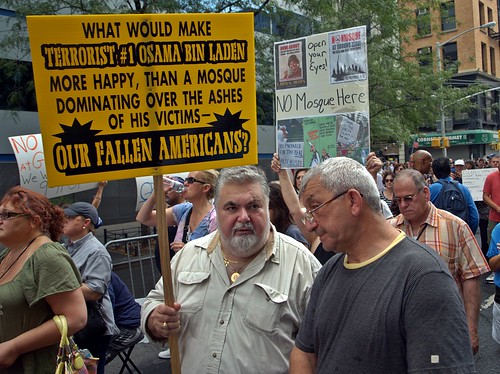
I have yet to hear anyone patrolling the border or arguing against amnesty talk about the plight of those immigrants-- they're a "cancer" or a "drain." Real American citizens are "anchor babies." When asked where she'd like the Cordoba Initiative to move their Islamic center to if she didn't like it at Ground Zero, one woman said "they ought to move it to the Middle East." When asked what injury or injustice building a moderate-leaning mosque would cause two blocks away from the WTC, the only response I've seen from opponents like these guys is that it's "offensive" or that their feelings are hurt. The last time I checked, getting your feelings hurt wasn't a violation of your civil rights. Preventing the free exercise of one's faith, however, in a privately owned building set aside for that purpose is. Besides-- let's take the whole WTC fiasco out of the equation entirely and look closer to home. If that's the only reason this mosque is an issue, then why are two similar projects in my home state in Appalachia getting this same kind of resistance, with protesters in one nearby town bringing their dogs just to offend the Muslims?
I wish that I could blame this on just a few crazies in the conservative movement, but I can't. Conservative politicians whom I used to respect have weighed in on the mosque conflict, asking for it to be moved; Franklin Graham, whose charities I had previously supported, not only viciously opposes the Park51 mosque but recently called Obama a "Muslim," and he's extremely influential in my circles. That makes him part of a too large minority in the conservative movement who seem to be calling the shots more and more. Add that to the entire state of Arizona, several other states considering similar statutes, and the score of mainline conservative leaders seriously considering changing the 14th Amendment to deny citizenship to native-born people based on the crimes of their parents, and I'm absolutely flummoxed. I feel like I woke up on another planet.
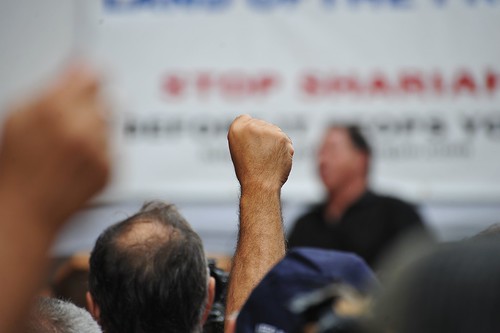
I can no longer consider myself a member of an ideology whose fear has made them do violence to the First Amendment and seriously consider dismantling the Fourteenth. With the exception of Prohibition (which was rightly fixed), basically all of the additions to the Bill of Rights have been to extend freedoms to the people, not to limit them. And the proposed change to citizenship standards, as well as for a proposed Constitutional amendment preventing gay marriage, do the opposite.
I certainly hold no ill feelings towards those who, unlike me, have the fortitude to stay behind and fight this out on the front lines in the conservative movement; rather, I wish them well, for I know that if I were to stay it would wear me down. All I know is that I can find no leadership who represents me, and I don't really know how to stay behind among them without tacitly supporting the same civil cancers I'm fighting against. As such, I feel it's time for me-- at least for a little while-- to leave this homeland behind, not to reject it, but to kneel here at the waters of my American Babylon and lament its descent into madness. Welcome to exile, Jackrabbit.
PHOTO CREDIT:
1) Two young girls protesting on behalf of Park51, from david_shankbone's Flickr photostream.
2) NYC protesters against the Park51 mosque, from david_shankbone's Flickr photostream.
3) NYC protesters against the Park51 mosque, from asterix611's Flickr photostream.
 So anyhow, since I was at a protest a couple of weeks ago, I've been looking at the way the protest has progressed on Flickr just to compare notes. In one picture, I saw this picture of a couple of little kids supporting the Park51 center with American flags in hand, and I smiled. Then I saw a picture of a man across the street in a military T-shirt holding a crude drawing of the prophet Muhammad as a pig. It had the word "pedophile" written across the top. Then I really wanted to throw up.
So anyhow, since I was at a protest a couple of weeks ago, I've been looking at the way the protest has progressed on Flickr just to compare notes. In one picture, I saw this picture of a couple of little kids supporting the Park51 center with American flags in hand, and I smiled. Then I saw a picture of a man across the street in a military T-shirt holding a crude drawing of the prophet Muhammad as a pig. It had the word "pedophile" written across the top. Then I really wanted to throw up. Certainly, the whole Manhattan mosque debate isn't the only reason for my recent political ambivalence, but it sure crystallizes a lot of issues I've had with my moral place in the political universe recently. You see, I have come to realize over the last few weeks that, while I still feel like I still have a lot to offer a conservative political philosophy, I look around at our rapidly-approaching mainstream Tea Party movement and the wackos who cling to its sides like remoras, only to discover that it has absolutely nothing to offer me. I see hate and intolerance, violation of freedom out of fear, decisions gauged by reflex instead of reason... what the hell just happened? Where's the voice of reason in all this madness? If she's calling out, I can't hear it through all the static I'm getting from the hate-mongers.
Certainly my dis-ease has been brewing for a while, but what has finally pushed me over the edge has been the response to the immigration and Islam debates. There are no ideals backing up these ideas anymore. It's entirely about fear. We're terrified of the threat of the "other" so we try to force them into hiding with a noisy show of force. We make them out as less than human, and this entrenched fear, ironically, scares me. For the sake of my own sanity and the people I am trying to help, I realized that I couldn't stay here any more, and I am now essentially a woman without a country. It's time for me to pack my philosophical bags, move into exile, and pine for the loss of my homeland. I am no longer a conservative; I'm a refugee.
Don't get me wrong: my identity as a "conservative" has always been an uneasy fit. (Heck, I stopped being a "Republican" years ago.) It's not always easy for a rabidly pro-gay justice freak who doesn't support the death penalty and supports affirmative action (though I would prefer that it be governed by socio-economic issues instead of race) to fit in even in the big-tent ideology of the conservative movement. I still like the idea of fiscal responsibility. I still think you can get things done better on the state rather than the federal level. I'm still convinced that a tightly regulated capitalism is the best way to improve the lot of all people in the world (although that stance requires a lot of explanation, I know.) I see immigration reform as a necessity because it's a huge human rights issue; you can't turn a blind eye to people being shipped about and slaughtered like animals in the desert by coyotes just to make them second-class citizens without legal protections in the US. And I truly feel that the Constitution is our best judge of how to protect the rights of both the greatest and least in our society. We just have to let it do what it does best-- protect freedoms and limit interference of persons and institutions against the inalienable rights of the individual.
But it's that last issue, the Constitution, that's been the last straw for me. I think what finally pushed me over the edge was all this talk about changing the Constitution on the one hand and ignoring what it says on the other. There are mainstream conservatives-- some whom I have respected even when I haven't entirely agreed with them-- who have seriously considered looking into changing citizenship requirements listed in the 14th Amendment to deny citizenship to people born on American soil. And when Americans start protesting the right of other Americans to peacefully practice their faith-- and offering state land to a religious group to make everyone happy-- I really start to fret. On the one hand, that interference in Park51's right to exist under the rule of New York law is a violation of the separation of church and state. On the other hand, so is an elected official offering to give state land to a religious entity to incentivise the move, and both of these should have bothered true conservatives deeply. But they're the ones promoting it.

I have yet to hear anyone patrolling the border or arguing against amnesty talk about the plight of those immigrants-- they're a "cancer" or a "drain." Real American citizens are "anchor babies." When asked where she'd like the Cordoba Initiative to move their Islamic center to if she didn't like it at Ground Zero, one woman said "they ought to move it to the Middle East." When asked what injury or injustice building a moderate-leaning mosque would cause two blocks away from the WTC, the only response I've seen from opponents like these guys is that it's "offensive" or that their feelings are hurt. The last time I checked, getting your feelings hurt wasn't a violation of your civil rights. Preventing the free exercise of one's faith, however, in a privately owned building set aside for that purpose is. Besides-- let's take the whole WTC fiasco out of the equation entirely and look closer to home. If that's the only reason this mosque is an issue, then why are two similar projects in my home state in Appalachia getting this same kind of resistance, with protesters in one nearby town bringing their dogs just to offend the Muslims?
I wish that I could blame this on just a few crazies in the conservative movement, but I can't. Conservative politicians whom I used to respect have weighed in on the mosque conflict, asking for it to be moved; Franklin Graham, whose charities I had previously supported, not only viciously opposes the Park51 mosque but recently called Obama a "Muslim," and he's extremely influential in my circles. That makes him part of a too large minority in the conservative movement who seem to be calling the shots more and more. Add that to the entire state of Arizona, several other states considering similar statutes, and the score of mainline conservative leaders seriously considering changing the 14th Amendment to deny citizenship to native-born people based on the crimes of their parents, and I'm absolutely flummoxed. I feel like I woke up on another planet.

I can no longer consider myself a member of an ideology whose fear has made them do violence to the First Amendment and seriously consider dismantling the Fourteenth. With the exception of Prohibition (which was rightly fixed), basically all of the additions to the Bill of Rights have been to extend freedoms to the people, not to limit them. And the proposed change to citizenship standards, as well as for a proposed Constitutional amendment preventing gay marriage, do the opposite.
I certainly hold no ill feelings towards those who, unlike me, have the fortitude to stay behind and fight this out on the front lines in the conservative movement; rather, I wish them well, for I know that if I were to stay it would wear me down. All I know is that I can find no leadership who represents me, and I don't really know how to stay behind among them without tacitly supporting the same civil cancers I'm fighting against. As such, I feel it's time for me-- at least for a little while-- to leave this homeland behind, not to reject it, but to kneel here at the waters of my American Babylon and lament its descent into madness. Welcome to exile, Jackrabbit.
PHOTO CREDIT:
1) Two young girls protesting on behalf of Park51, from david_shankbone's Flickr photostream.
2) NYC protesters against the Park51 mosque, from david_shankbone's Flickr photostream.
3) NYC protesters against the Park51 mosque, from asterix611's Flickr photostream.
Labels:
ethics,
faith,
miscellaneous rant,
politics,
racism
Friday, August 27, 2010
Laramie in Pictures: The Railroad
When I left my hometown to go to Laramie this summer, I did so with the goal of fulfilling two different requests:
So, I wanted to give you some idea of what kind of experience the Laramie rail-yard affords in pictures: by day, by night, and from the catwalk.
And did I spit on a train, you ask?
Well, I couldn't leave my husband disappointed, now could I?
- From my father: "Go take your brother Coyote out for a steak and make sure he's eating."
- From my husband: "Go spit on a train for me."
So, I wanted to give you some idea of what kind of experience the Laramie rail-yard affords in pictures: by day, by night, and from the catwalk.
And did I spit on a train, you ask?
Well, I couldn't leave my husband disappointed, now could I?
Labels:
In Pictures,
landscape,
Laramie
Monday, August 23, 2010
The Buck Fence and Place
Since I was in Laramie, did I go to "the spot" while I was there, some might ask? No. I'm not going to further that landowner's angst and resentment by trooping through his private property to gawk at a murder site. My respect for private property is too strong to do so, and I don't need to get arrested for trespassing. But I did drive through the Sherman Hills subdivision just to see how much it has changed in the last ten years.
As the Vanity Fair article (March '99) on the Shepard murder made clear, and as Beth Loffreda talks about in her book, Matt was murdered basically in between two subdivisions still under construction at the time; the empty field between them, stretching a little more than a half mile wide in either direction, buts up against the rolling hills of the more expensive district of Sherman Hills. These foothills roll straight into the walls of Telephone Canyon, the Medicine Bow National Forest, and a large, beautiful state park about nine miles up the road.
The two subdivisions couldn't be more different. The first one is everything that gives me nightmares about subdivisions: large, overpriced houses so close together you can listen to your neighbor breathe at night, tiny yards, even less privacy... just an upper middle-class nightmare. It's still growing, too-- you can see dirt in some of these yards and a couple of unfinished frames at the end of the street. (And yes, that is a throw pillow on the sidewalk. I have no clue.) No trees or room for lawns, but wide, overdone infrastructure: wide, paved streets, street lights, sidewalks. I pass kids on plastic Power Wheels and playing horse with their friends in the driveways, bouncing their basketballs off of garage doors. It's about as close to a pre-fab middle class Americana as you'd ever want to see. Give me west Laramie any day.
Take a bit of a drive down Grand Avenue one more street to the east and you end up in Sherman Hills, which is a bit of a mixed neighborhood. It started out as just a normal neighborhood on the edge of town, but a large tract behind it was bought by developers and turned into houses that run into the upper six figures to a low million. The houses to the north and east of Sherman Hills are all enormous, high-windowed affairs that no one in their right mind would want to heat in the middle of the winter. They have more rooms than most families could possibly need, and many sit right on the top of these low, rolling hills, where the view is spectacular but the raging winter winds sometimes blow hard enough to knock the fillings out of your teeth. (This is why older homes are often nestled on slopes and low-lying areas, or alternately, have tree breaks around them.)
The houses themselves are massive, grandiose-- and yet they try to keep an "out of town" profile as well. Unlike the area around Bill Nye, in this stretch of the subdivision there are few paved roads, and the few that are there are one-laners, winding and narrow, with no shoulder to speak of. They're barely marked with street signs, even. The landscaping around them is heavily manicured but natural: scrub juniper and cedars, imported granite rock, deer antlers. One yard has a four-foot sculpture made out of what looks like old elk antlers twisting up into the air, perfectly positioned on a gently sloping hill of native grass. The main colors are deep cedar green, prairie yellow, pink feldspar boulders accented with lichen. There are no livestock, feed pens or horse sheds like in the liminal neighborhoods on the other side of Grand Avenue, either; you'll see no llamas here. Offhand, I don't even see a watered lawn within eyesight. There might be some, but I'll be darned if I drove by any.
Those gravel roads aren't a sign of recent development, either; the house near the murder scene was under construction when Matt was murdered. It was graded as a gravel road, and it has remained one still. And, every one of these enormous, beautiful houses sits on up to an acre of land. Many of them are far enough apart to give the illusion that they have no neighbors, even though they might be just on the other side of the same hill. While the newspaper reports used words like "lonely and "deserted" in their descriptions of this area on the night Matt died, the real estate catalog probably calls it "private" and "secluded."
There's a strange, careful construction of identity in this area: they want to live in opulence and they want to live sequestered from the rest of town in their own private luxury, but they want to maintain the illusion of a rugged, rural existence. This isn't town space, the landscape proclaims. And yet, it cannot really be anything else.
And yet, this is where I finally start seeing buck-and-rail fences in Laramie, Wyoming-- dozens of them, essentially, and I see some in both of these neighborhoods. (The most are in Sherman Hills, however.) Normally, the only place you'll ever consistently see buck fences is around state maintained areas, like city or state parks and rest areas, or around monuments like up on the Lincoln Highway just to the east. And yet here, every fifth house or so has some kind of wooden or split-rail fence around it, and the buck-and-rail is one of the most popular I see.
 As I stare at the landscape around me and take in the aura, it strikes me how different my perception of this place is from my students, from the thousands of people who have tried to imagine what this spot is like and what that buck fence represents. That fence wasn't there because this was the Wild West. It was there precisely because this place wasn't the Wild West. For me at least, the buck fence was a sign of class difference and exclusion, not small town ideals, or cowboy morality, or even rural existence. The buck fence was there because this land had been co-opted to create a middle class utopia and an upper class getaway community; it was there because the wilderness and rural edges of Laramie were squeezed out and they wanted to create the illusion that they had never disappeared. When look at these fences, I don't see of a story of western outlawry, but a story of two poverty-class men who kidnapped a rich kid because he was gay and murdered him on the site where the difference between them was still under construction, in the secluded red earth hills east of Laramie, on shaggy pine rails.
As I stare at the landscape around me and take in the aura, it strikes me how different my perception of this place is from my students, from the thousands of people who have tried to imagine what this spot is like and what that buck fence represents. That fence wasn't there because this was the Wild West. It was there precisely because this place wasn't the Wild West. For me at least, the buck fence was a sign of class difference and exclusion, not small town ideals, or cowboy morality, or even rural existence. The buck fence was there because this land had been co-opted to create a middle class utopia and an upper class getaway community; it was there because the wilderness and rural edges of Laramie were squeezed out and they wanted to create the illusion that they had never disappeared. When look at these fences, I don't see of a story of western outlawry, but a story of two poverty-class men who kidnapped a rich kid because he was gay and murdered him on the site where the difference between them was still under construction, in the secluded red earth hills east of Laramie, on shaggy pine rails.
As the Vanity Fair article (March '99) on the Shepard murder made clear, and as Beth Loffreda talks about in her book, Matt was murdered basically in between two subdivisions still under construction at the time; the empty field between them, stretching a little more than a half mile wide in either direction, buts up against the rolling hills of the more expensive district of Sherman Hills. These foothills roll straight into the walls of Telephone Canyon, the Medicine Bow National Forest, and a large, beautiful state park about nine miles up the road.
The two subdivisions couldn't be more different. The first one is everything that gives me nightmares about subdivisions: large, overpriced houses so close together you can listen to your neighbor breathe at night, tiny yards, even less privacy... just an upper middle-class nightmare. It's still growing, too-- you can see dirt in some of these yards and a couple of unfinished frames at the end of the street. (And yes, that is a throw pillow on the sidewalk. I have no clue.) No trees or room for lawns, but wide, overdone infrastructure: wide, paved streets, street lights, sidewalks. I pass kids on plastic Power Wheels and playing horse with their friends in the driveways, bouncing their basketballs off of garage doors. It's about as close to a pre-fab middle class Americana as you'd ever want to see. Give me west Laramie any day.
Take a bit of a drive down Grand Avenue one more street to the east and you end up in Sherman Hills, which is a bit of a mixed neighborhood. It started out as just a normal neighborhood on the edge of town, but a large tract behind it was bought by developers and turned into houses that run into the upper six figures to a low million. The houses to the north and east of Sherman Hills are all enormous, high-windowed affairs that no one in their right mind would want to heat in the middle of the winter. They have more rooms than most families could possibly need, and many sit right on the top of these low, rolling hills, where the view is spectacular but the raging winter winds sometimes blow hard enough to knock the fillings out of your teeth. (This is why older homes are often nestled on slopes and low-lying areas, or alternately, have tree breaks around them.)
The houses themselves are massive, grandiose-- and yet they try to keep an "out of town" profile as well. Unlike the area around Bill Nye, in this stretch of the subdivision there are few paved roads, and the few that are there are one-laners, winding and narrow, with no shoulder to speak of. They're barely marked with street signs, even. The landscaping around them is heavily manicured but natural: scrub juniper and cedars, imported granite rock, deer antlers. One yard has a four-foot sculpture made out of what looks like old elk antlers twisting up into the air, perfectly positioned on a gently sloping hill of native grass. The main colors are deep cedar green, prairie yellow, pink feldspar boulders accented with lichen. There are no livestock, feed pens or horse sheds like in the liminal neighborhoods on the other side of Grand Avenue, either; you'll see no llamas here. Offhand, I don't even see a watered lawn within eyesight. There might be some, but I'll be darned if I drove by any.
Those gravel roads aren't a sign of recent development, either; the house near the murder scene was under construction when Matt was murdered. It was graded as a gravel road, and it has remained one still. And, every one of these enormous, beautiful houses sits on up to an acre of land. Many of them are far enough apart to give the illusion that they have no neighbors, even though they might be just on the other side of the same hill. While the newspaper reports used words like "lonely and "deserted" in their descriptions of this area on the night Matt died, the real estate catalog probably calls it "private" and "secluded."
There's a strange, careful construction of identity in this area: they want to live in opulence and they want to live sequestered from the rest of town in their own private luxury, but they want to maintain the illusion of a rugged, rural existence. This isn't town space, the landscape proclaims. And yet, it cannot really be anything else.
And yet, this is where I finally start seeing buck-and-rail fences in Laramie, Wyoming-- dozens of them, essentially, and I see some in both of these neighborhoods. (The most are in Sherman Hills, however.) Normally, the only place you'll ever consistently see buck fences is around state maintained areas, like city or state parks and rest areas, or around monuments like up on the Lincoln Highway just to the east. And yet here, every fifth house or so has some kind of wooden or split-rail fence around it, and the buck-and-rail is one of the most popular I see.
 As I stare at the landscape around me and take in the aura, it strikes me how different my perception of this place is from my students, from the thousands of people who have tried to imagine what this spot is like and what that buck fence represents. That fence wasn't there because this was the Wild West. It was there precisely because this place wasn't the Wild West. For me at least, the buck fence was a sign of class difference and exclusion, not small town ideals, or cowboy morality, or even rural existence. The buck fence was there because this land had been co-opted to create a middle class utopia and an upper class getaway community; it was there because the wilderness and rural edges of Laramie were squeezed out and they wanted to create the illusion that they had never disappeared. When look at these fences, I don't see of a story of western outlawry, but a story of two poverty-class men who kidnapped a rich kid because he was gay and murdered him on the site where the difference between them was still under construction, in the secluded red earth hills east of Laramie, on shaggy pine rails.
As I stare at the landscape around me and take in the aura, it strikes me how different my perception of this place is from my students, from the thousands of people who have tried to imagine what this spot is like and what that buck fence represents. That fence wasn't there because this was the Wild West. It was there precisely because this place wasn't the Wild West. For me at least, the buck fence was a sign of class difference and exclusion, not small town ideals, or cowboy morality, or even rural existence. The buck fence was there because this land had been co-opted to create a middle class utopia and an upper class getaway community; it was there because the wilderness and rural edges of Laramie were squeezed out and they wanted to create the illusion that they had never disappeared. When look at these fences, I don't see of a story of western outlawry, but a story of two poverty-class men who kidnapped a rich kid because he was gay and murdered him on the site where the difference between them was still under construction, in the secluded red earth hills east of Laramie, on shaggy pine rails.
Labels:
buck fence,
class conflict,
landscape,
Laramie,
pastoral
Friday, August 20, 2010
Laramie in Pictures: Prairie Storms
Many people think that the Great Plains and the prairies are boring because they are so uniform: unending, unchanging, lifeless; nothing but an endless stretch of flat grass and mosquitoes. (They're right about the mosquitoes.) In reality, the prairie is a land of tensions and contrasts, and therein lies its real beauty. The prairies I roamed as a little jackrabbit lay at the base of the Rocky Mountains, and above that endless stretch of golden grass is an endless sky, so deep blue you could swim in it; and in that sky are an endless parade of clouds fleeing as fast as the ripples through the golden tide below, casting shadows over the grass which glide, like ships, over the ground. And in the seeming stillness and peace of the flatlands lurks the ever-present threat of the prairie storm, one of the most amazing feats of raw power God's ever given mortal man.
When I was in Laramie, I was treated to an amazing display of weather-- in fact, a prairie storm which swallowed up the plains and spun off tornadoes to the north of town. Here are a few shots of that storm so you can see it for yourself as it rolled towards, and through, Laramie:
When I was in Laramie, I was treated to an amazing display of weather-- in fact, a prairie storm which swallowed up the plains and spun off tornadoes to the north of town. Here are a few shots of that storm so you can see it for yourself as it rolled towards, and through, Laramie:
Labels:
In Pictures,
landscape,
Laramie
Subscribe to:
Posts (Atom)

